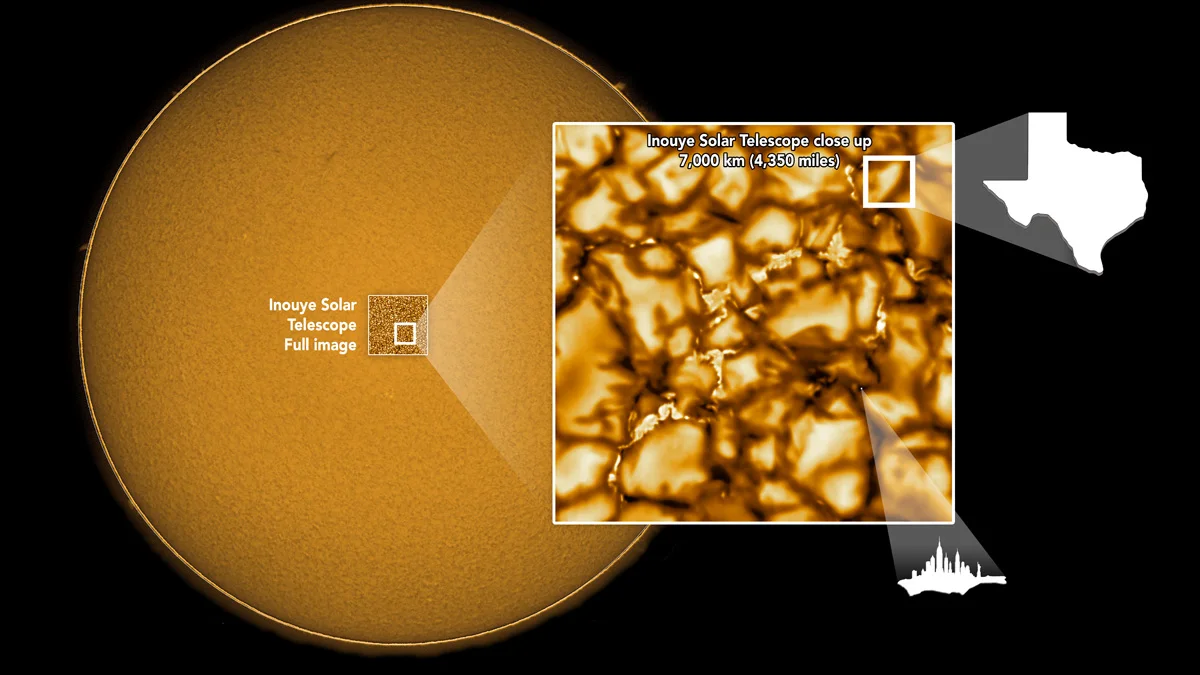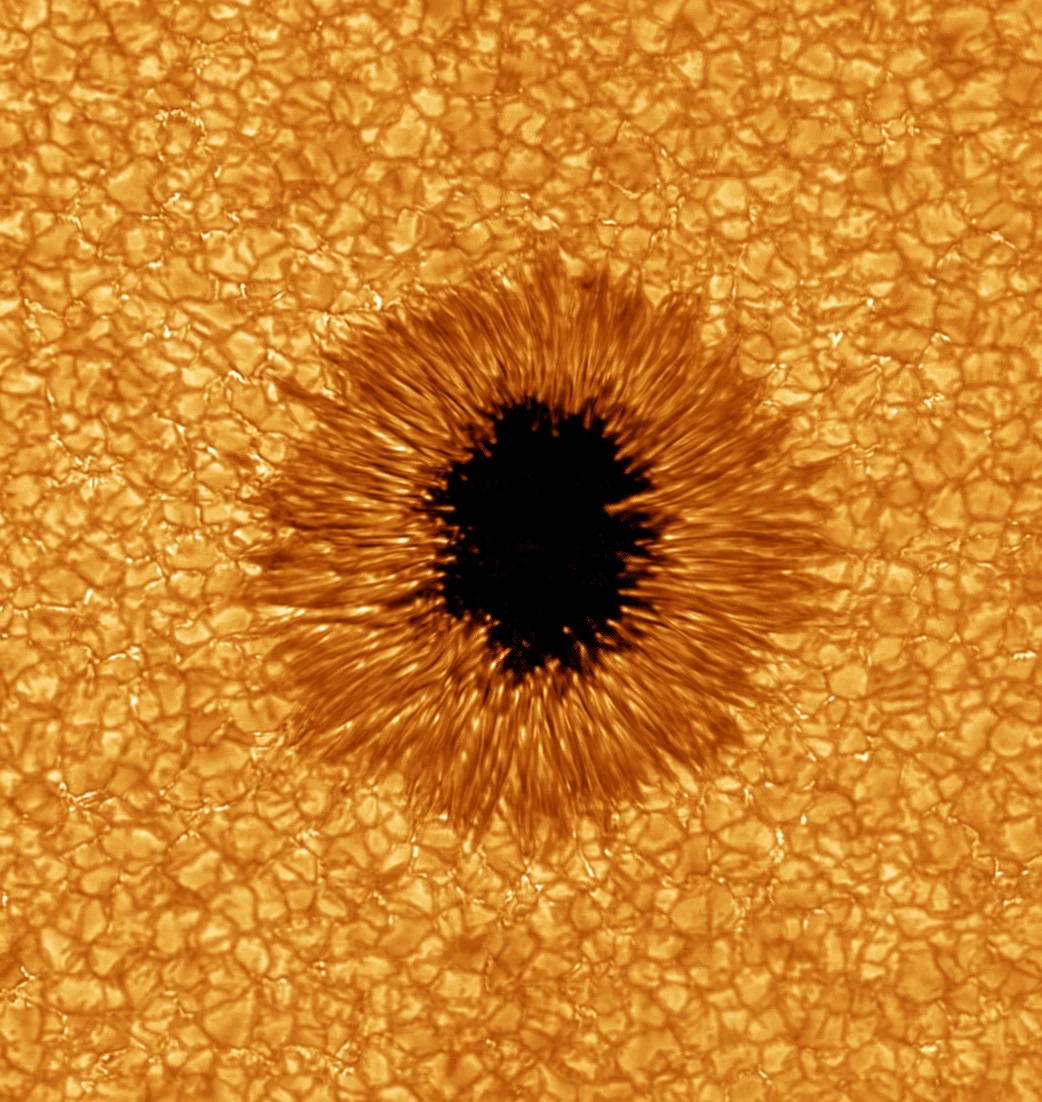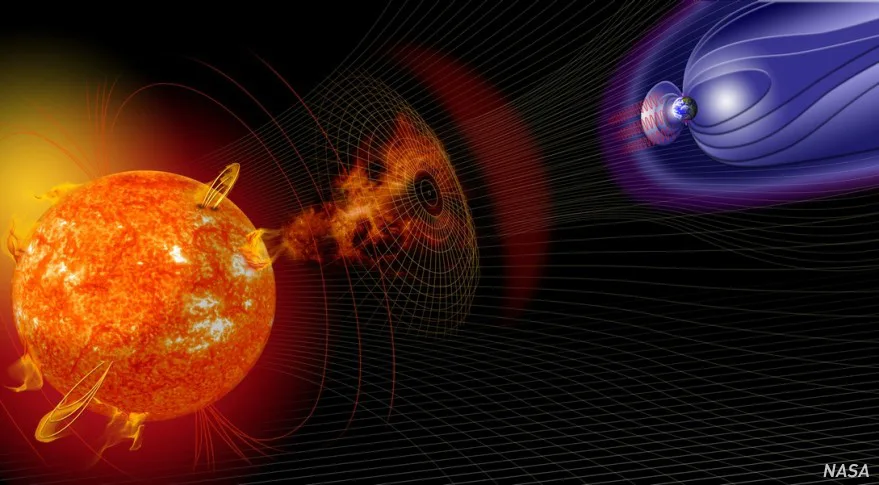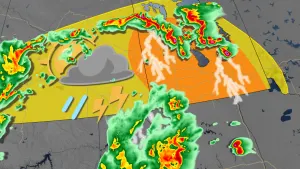
New telescope reveals Sun's surface in never-before-seen detail
This very first image from the world's largest solar telescope is our best-ever look at the Sun
The new Daniel K. Inouye Solar Telescope snapped its very first image of the Sun's surface, and the results are quite simply the best, most high-resolution look at our home star that have ever been recorded.
"It's a big deal," Professor Jeff Kuhn, of the University of Hawai'i at Mānoa’s Institute for Astronomy, said in a University of Hawai'i press release.
"It is literally the greatest leap in humanity's ability to study the Sun from the ground since Galileo's time," Kuhn added.
The Daniel K. Inouye Solar Telescope (DKIST), located at the summit of Hawai'i's Haleakalā, is not set to be fully operational until July of this year. Even so, as the scientists and engineers behind the project add more instruments that will aid in their study of the Sun, the telescope is already producing images like this...

This first image of the Sun's visible surface (photosphere) from the new Daniel K. Inouye Solar Telescope was captured on December 12, 2019. A map of the United States is provided for scale. The smallest visible details are just 30 kilometres across! Credit: NSO/NSF/AURA
Before this, the highest-resolution imagery of the Sun was being produced by NASA's Solar Dynamics Observatory, located in Earth orbit, and the Big Bear Solar Telescope located in the mountains to the west of Los Angeles, CA.

This sunspot, imaged by the Big Bear Solar Telescope on July 2, 2010, was once called "the most precise image of the Sun's surface ever taken". The smallest visible details are 65 km across. Credit: BBSO
Now, with DKIST's 4-metre telescope, the largest solar telescope constructed to date, astronomers can study the Sun in never-before-seen levels of detail.

This zoomed crop of DKIST's first image shows a region of the Sun just 8,200 km x 8,200 km in size. Each of the bright cells of plasma - hot solar material welling up to the surface - is roughly the size of the state of Texas. Credit: NSO/NSF/AURA
According to the National Solar Observatory: "The image shows a pattern of turbulent, "boiling" gas that covers the entire sun. The cell-like structures – each about the size of Texas – are the signature of violent motions that transport heat from the inside of the sun to its surface. Hot solar material (plasma) rises in the bright centers of "cells," cools off and then sinks below the surface in dark lanes in a process known as convection. In these dark lanes we can also see the tiny, bright markers of magnetic fields. Never before seen to this clarity, these bright specks are thought to channel energy up into the outer layers of the solar atmosphere called the corona. These bright spots may be at the core of why the solar corona is more than a million degrees!"
THE KEYS TO SPACE WEATHER
In addition to unlocking the mysteries of solar activity and the intense heat of the corona, the telescope's observations are expected to help scientists unlock the mysteries of space weather, which would allow them to improve forecasts and better protect our technologies and power grids.
"On Earth, we can predict if it is going to rain pretty much anywhere in the world very accurately, and space weather just isn't there yet," Matt Mountain, president of the Association of Universities for Research in Astronomy, said in an NSO press release. "Our predictions lag behind terrestrial weather by 50 years, if not more. What we need is to grasp the underlying physics behind space weather, and this starts at the Sun, which is what the Inouye Solar Telescope will study over the next decades."

This artist illustration depicts sunspots, coronal loops and coronal mass ejections, which can have an impact on the conditions in Near-Earth space. Credit: NASA
Sunspots, solar flares and coronal mass ejections are all caused by the magnetic fields near the Sun's surface, as they become tangled up among themselves, and those tangles then violently unravel. The magnetic fields farther away from the surface then control how coronal mass ejections expand out into space, and how the solar wind streams away from the Sun.
The keys to unlocking exactly how this all happens will come from DKIST's Cryogenic Near-Infrared Spectropolarimeter (CryoNIRSP) and Diffraction-Limited Near-IR Spectropolarimeter (DL-NIRSP), two instruments set to be installed before July. Together, they will allow the telescope to image the Sun's magnetic fields in incredibly fine detail.
JUST THE BEGINNING
"These first images are just the beginning," said David Boboltz, program director in NSF’s division of astronomical sciences and who oversees the facility’s construction and operations.
"Over the next six months, the Inouye telescope's team of scientists, engineers and technicians will continue testing and commissioning the telescope to make it ready for use by the international solar scientific community. The Inouye Solar Telescope will collect more information about our Sun during the first 5 years of its lifetime than all the solar data gathered since Galileo first pointed a telescope at the Sun in 1612."
Sources: NSO | University of Hawai'i | BBSO | NASA










